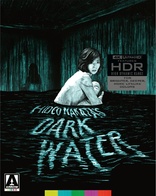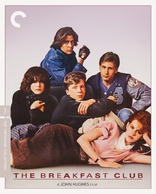Quote:
Originally Posted by lagunaseca

There is a lot of wrong info in this thread. One guy is talking about lossless audio when 24fps is about video only, and another guy is saying 23.976=24 and it's all "A/C oscilliation". Not sure what that means.
23.976fps is not the same as 24fps. 35mm films are 24fps, and in the old days black & white was broadcast at 24fps. When color TV came out they needed to be able to broadcast to support both color and B&W TVs. That's when they came up with the 23.976fps hack. Even I don't understand is completely but please see this Reddit discusstion:
https://www.reddit.com/r/explainlike...c6&sh=d7e5d8d9
Also see this YouTube video explaining it: The History of Frame Rate for Film - YouTube
Ideally you want to have a round fps number to reduce complexity in processing the data (which saves time and money). Working with fractions is more time consuming than working with whole numbers. See FPUs ( https://en.wikipedia.org/wiki/Floating-point_unit)
Studios need to stop authoring blurays at 23.976fps. So far all of the Bollywood blurays I've seen are 24fps and I haven't see any issues playing them.
In regards to audio, the reason why DVD's audio tracks are 48,000hz instead of 44,1000khz is because 48khz is evenly divisible by 24fps. 44.1khz was good for audio CDs, but when you have audio AND video you need even divisible round numbers to make it easier to process audio & video together. But the video on DVDs was still 23.976 becuase it was outputting analog video. With digital video there is no reason to have a fractional frame rate. |
Sorry, there's a lot wrong in your post. Analog TV did not broadcast at 24 or 23.997. It broadcast at 30fps originally and had to switch to 29.997 when color came in. But all this applies only to analog TV. 24 fps movies were converted using what's called a 3:2 pulldown to 30fps (or 29.997 once color came in) for broadcast. You can lookup what that means..too many details to note here. TV shows recorded on video were recorded at 30fps (or 29.997).
The reason why color analog TV had to change the 30 fps rate is because the 3.58MHZ color subcarrier would absorb common phase noise from the harmonics of the line scan frequency. So they adjusted everything else except the audio and chroma subcarriers, including the frame rate. So they took the 30 Hz frame rate (not 24) and divided it by 1.001 to get 29.97.
But then they also had to adjust the SMPTE Time Code because at 30fps, an hour of timecode was longer than the wall-clock time by 3.59 seconds. That would lead to an 86.16 second error per day, something unacceptable for television scheduling, especially when it became automated.
So SMPTE "Drop-Frame" Timecode drops frame numbers 0 and 1 of the 1st second of every minute, except when the number of minutes is divisible by 10. Note that the video frames aren't actually dropped, just the timecode frames are dropped.
But drop-frame isn't actually used much anymore. I know this because I was responsible for the development of an application used by the industry that incorporated asset metadata, including SMPTE timecode. When we asked all of the clients whether we needed to support drop-frame, everyone said no (but I left it in anyway as an option).
As for audio, I can't say I know this with 100% certainty, but as an ex-recording engineer, I don't think the sampling rate has anything to do with the frame rate, so I don't believe that the 48 KHz sampling rate was chosen to "fit" 24 frames. I think it was just a matter of wanting a slightly wider frequency response. A 48KHz sampling rate can handle frequencies up to 24KHz and the 44.1 KHz sampling rate of standard CDs can handle frequencies up to 22KHz (the extra ".1" was for a margin of error on early filters). This is all based on the Nyquist Theorem where the sampling rate must be twice the highest frequency you wished reproduced. Also, while CDs are 44.1/16 bit, professional audio digital recorders have been 48/24 bit for many years now. (Some even sample at 96KHz). That's where the 48KHz sampling rate comes from. (If you have documentation proving otherwise in regards to the 48KHz sampling rate, please point me to it.).






















 Linear Mode
Linear Mode

